Affective affinities and the works of friends influence me. Dialogues and life inform my thinking. I love for works to explore new territories. I believe, naïvely, in the power of art to change society. This belief is growing stronger by the day. Here is a small sample of works and artists who open doors in my head.
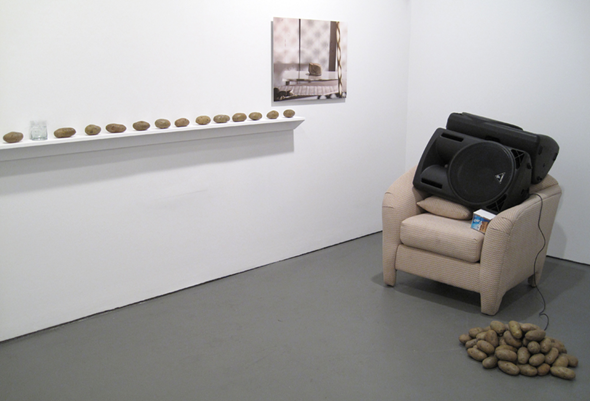
White Columns, New York City, 2010
Courtesy of White Columns
Margaret Lee
Margaret Lee co-runs 47 Canal, a gallery I work with. She is also an artist who likes to collaborate. Lee makes, amongst other things, ultra-realistic plaster potatoes – read sexual appendages. In 2010, she curated a group show at White Columns in New York that I loved. Titled Michele Abeles/Margaret Lee\Darren Bader (after the artists in the show), Lee made a simple request of her peers: do as you wish, but use my potatoes. So there were potatoes galore. The idiotic root was everywhere: the lines between the works were blurred and their authorship became indistinguishable. Lee provided a genuine but perverted platform for the artists – the love triangle was total and the works became one. I loved the hybridization of a curated show turned into a single work of Lee’s, all with one elegant, self-deprecating, gesture. A form of peer-to-peer re-appropriation and exchange, in real life. *1980 in the Bronx, NY, lives in New York City.
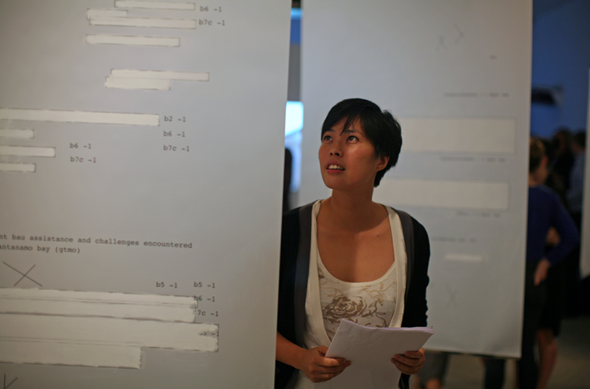
7th sequence of a mini-opera for non musicians, Grantpirrie Projects, Sydney, 2011
Franck Leibovici
In 2008, poet and artist Franck Leibovici embarked on a mini-opera for non musicians (2008–2013) in ten sequences. The first sequence is based on Colin Powell’s speech to the UN: a PowerPoint presentation building the case for Saddam Hussein’s regime possessing weapons of mass destruction and thus justifying the US-led invasion of Iraq. Leibovici enlisted volunteers (non professional singers) to sing Colin Powell’s words – using a Cornelius Cardew-type score – while the original slideshow is projected onto the walls. The result is a stunning piece of music. Centered around low-intensity conflicts, other sequences of Leibovici’s mini-opera transform leaked Wikileaks documents into a score for 40 instruments, or YouTube terrorist instructional videos into dance scores or conversation pieces performed by amateurs. One of Leibovici’s main focuses is the activation of documents through the use of artistic tools and scores to produce new knowledge – something he calls »forensic poetry«. At core, what fascinates me is the concrete use of art practice as a practical set of tools. *1975 in La Réunion, lives in Paris.
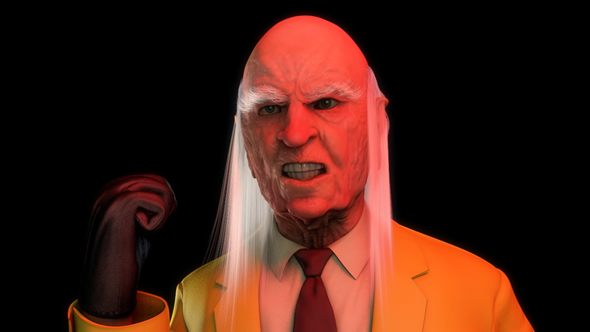
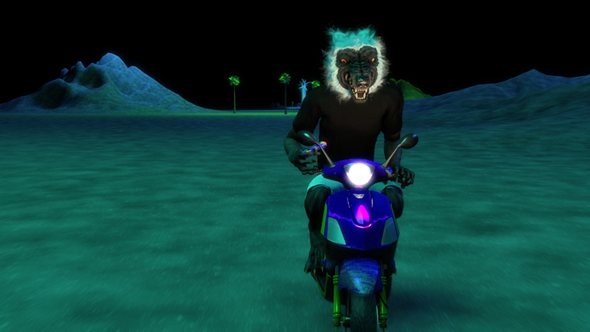
Single channel video, color, stereo, 11:39 min
Courtesy of Ratio 3, San Francisco
Takeshi Murata
Takeshi Murata is a great artist who’s been making, in Cory Arcangel’s words, »top-shelf works for the past ten years«. His last video OM Rider (2013) is a Pixar-type animation made single-handedly by Murata. The B-movie-inspired video revolves around two characters: a teen werewolf jamming on a synth on what looks like a deserted Caribbean island populated by huge wind turbines, and a nasty-looking old man living in a creepy mansion. Murata infuses his work with an uncanny flair for both comedy and drama – a non-negligible feat. Slightly spooky, the universes he creates ultimately feel like the depressing morning after a devastatingly fun party. What draws me to Murata’s work is an acute eye for leftover Americana. Like the artist Jim Shaw, he uncovers things that other artists overlook, but which leave a retinal impression on each of us. Bit by bit, Murata draws a comprehensive, psychedelic picture of our collective unconscious. *1974 in Chicago, lives in New York City.
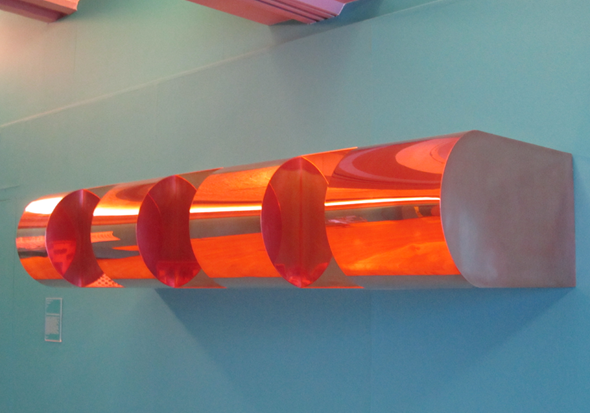
Copper, 37 x 194 x 75 cm
© Copyright, Vienna 2013
Donald Judd
In my first encounters with his works, I hated Donald Judd’s sculptures for the very reason I am obsessed with them now. Judd deliberately defies all possible affiliations (associations and recognition) – refusing to paint his works green, for instance, because it was too reminiscent of nature. Because of this, his sculptures are profoundly alienating; they exist for what they are, and they become, in my eyes, the closest one can get to physical-turned-mental entities. I see his work as a formal alternative to the sculpture-collages (of, for example, Alisa Baremboym, Lizzie Fitch, Yngve Holen, Timur Si-Qin, or Anicka Yi) that form the bulk of my peers’ sculptural language these days. But rather than existing in opposition to these practices, his work presents another route to a similar destination. *1928 in Missouri, † 1994 in New York City.
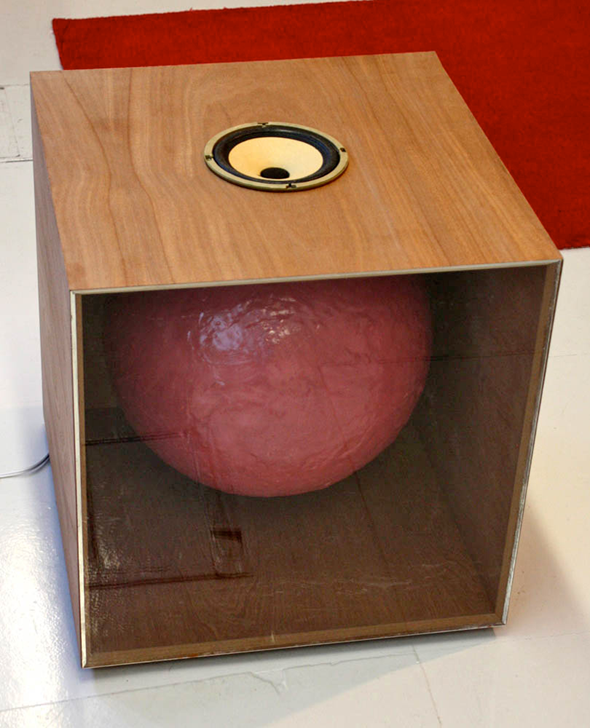
Sound sculpture
Photo: David Burrows
Dean Kenning
Artist, writer and art teacher, Dean Kenning is the type of artist who resists commercialization but keeps on churning out amazing works. He fights against British university reforms that will bring the cost of art tuition in the UK to absurd US levels, and is actively looking for alternatives (a complete rethinking of the educational system, for one) where others are not. Once Kenning told me that he works with murals and kinetic sculptures because they are potentially the worst possible art forms. His hilarious and at times abject sculptures have directly influenced my work. His kinetic, rubber, plantlike sculptures are instant classics (plus they can be integrated into any art show or domestic setting). In Value: A Visualisation (2012), a skinlike-covered ball trapped in a wooden box speaks – with a computer-generated voice – about the market. The focal point of Kenning’s reflections is the use of art and the role of the artist in society – of course I dig it. *1972 in Hounslow, UK, lives in London.
Science aesthetics and lo-fi or analog technology in the digital age mark the work of New York based ANTOINE CATALA (*1975). With a background in mathematics and sound art prior to attending art school, the French-born artist’s videos, performances and sculptures are laced with jokes and wordplay that never quite obscure a certain philosophical and political seriousness. Recent exhibitions include: Image Families (solo), UKS, Oslo; Speculations on Anonymous Materials, Fridericianum, Kassel; Meanwhile … Suddenly and Then, 12th Biennale de Lyon; Antibody, Lisa Cooley, New York (2013); TV (solo), Galerie Christine Mayer, Munich; I See Catastrophes Ahead (solo), 47 Canal, New York (2012).
